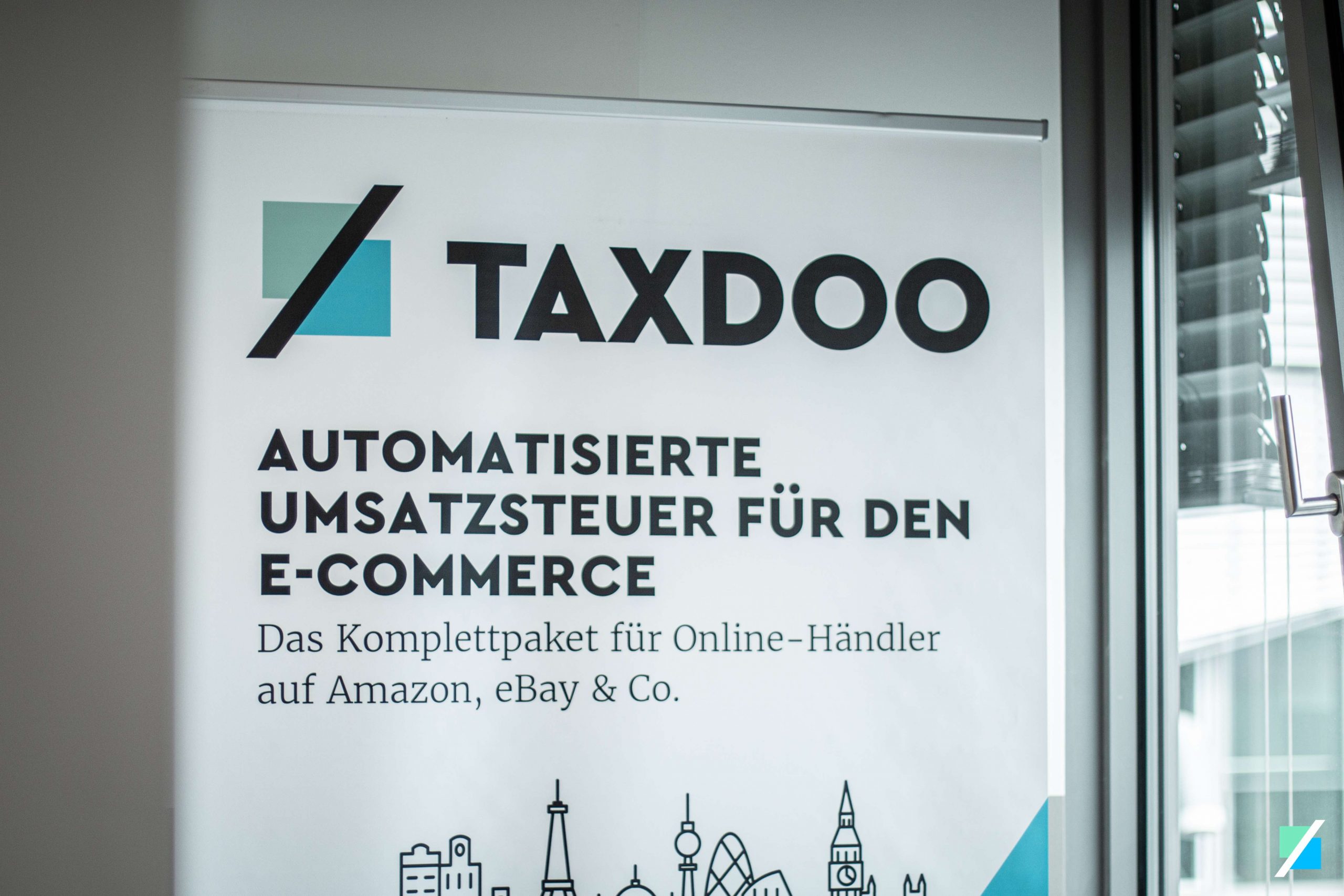How to determine the VAT rate on shipping costs etc., and how to reduce the VAT rate on some products?

In this blog post we want to clarify a question that is still incorrectly mapped in online commerce by many invoicing tools and ERP systems: How Value Added Tax are shipping costs and other additional services determined?
We also explain in this article how, for example, the tax rate for some products could be reduced from 19 percent to 7 percent.
First of all we would like to point out that Taxdoo is now an official partner of DATEV and can provide you with the most advanced FiBu interface for all online revenues and Amazonfees – see here.
Classic to-DATEV converters cost unnecessary time, money and carry risks – see here.
Now let’s start with the basic rule.
Each service is considered separately
In value added tax law – which applies throughout the EU – each service is considered separately.
From a VAT perspective, service is the generic term for both deliveries – e.g. the sale of products – and services – e.g. the transport of goods to the customer.
The following example should clarify this.
An online retailer sells to a customer a book about the effect of spices and a monthly ration of tonka beans. In addition, he charges the customer shipping costs.
From a VAT point of view, the trader provides
- two deliveries: a book and a monthly ration of tonka beans, and
- a service: the dispatch of the two products to the customer.
The dealer therefore basically provides three services which must be considered separately for VAT purposes – in particular when determining the VAT rate.
- Book: 7 percent Value Added Tax
- Tonka beans: 19 percent Value Added Tax
- Shipping costs: 19 percent Value Added Tax
Now the problem with determining the tax rate on fringe benefits – such as shipping costs – is becoming quite clear.
If the retailer did not openly show the shipping costs and simply added them to the product price, he would Value Added Tax save money in the case of the book – apart from the fixed book price.
However, VAT law is – in contrast to many other types of tax – quite realistic, so that the following applies in this case.
Additional services share the fate of the main service
From the customer’s point of view, in the above example the focus is ultimately only on the purchase of the two products.
For this reason, the book and the tonka beans are the two main services from a VAT point of view.
From the consumer’s point of view, mail order is only an ancillary service which is used to obtain the two main services.
The following principle therefore applies throughout the EU.
Fringe benefits share the legal fate of the main benefit.
What does this mean for the shipping costs in our example? How are they taxed?
How is the tax rate on shipping costs and Co. for mixed shopping baskets determined?
If we continue the example with the shopping basket of book and tonka beans, the question can be answered as follows.
Let us assume that the book costs 10 Euros (net) and the sound cable cars 20 Euros (net). The shipping costs are 6 Euro (net). Which invoice items should the invoice contain?
You see the solution here.
- Book “Effect of spices”: 10 euros plus 0.70 euros Value Added Tax (7 percent Value Added Tax)
- Tonka beans: 20 euros plus 3.80 euros Value Added Tax (19 percent Value Added Tax)
- Shipping costs (book): 2 euros plus 0.14 euros Value Added Tax (7 percentValue Added Tax)
- Shipping costs (tonka beans): 4 euros plus 0.76 euros Value Added Tax (19 percent Value Added Tax).
As can be seen here, the shipping costs are to be divided in the ratio of the net charges of the two main services – here 1 (book) : 2 (tonka beans) – and then subjected to the tax rate of the respective main service – book and tonka beans.
The following current example shows how this VAT principle – ancillary services share the fate of the main services – can also be used to influence the tax rate of products.
Tampons in the book or How do I lower the tax rate of my products?
The question of whether a product is subject to reduced (in Germany: 7 percent) or standard taxation (in Germany: 19 percent) is harmonised throughout the EU and regulated in detail in Germany.
The two overviews are available via the following links.
- Categories of services which can be taxed at a reduced rate by EU countries – see Annex III.
- Supplies (products) which are taxed at a reduced rate in Germany.
Anyone looking for a clear system here will hardly find it. Among other things, the principle applies that things for daily use – such as food in particular – are taxed at a reduced rate. However, there are also numerous exceptions and frequently perceived injustices.
How can it be explained, for example, that diapers are subject to the standard tax rate but truffles are taxed at a reduced rate?
This is what the two founders of the following start-up company, which focused on the production and distribution of tampons, thought. Since tampons are subject to the standard tax rate in Germany, although they are part of everyday use, the founders came up with the following trick.
They pack their tampons in a book, which provides extensive information on the subject on 46 pages.
The idea is that the tampons in the book are only a secondary service and thus share the fate of the main service – the book – and are thus subject to a tax rate of 7 percent.
Can this work?
In any case, it is a smart idea to draw attention to the unfairness of the reduced rates. For many years, lobbyists have been running riot in this segment – just think of the so-called Mövenpick tax. (Note: Behind this is the reduced tax rate for hotel accommodation, which the FDP had pushed through a few years ago. During this time, the owner of the Mövenpick hotels also made a donation to the FDP).
In order to clarify whether this trick also works in terms of turnover tax, the following question must be answered: Does the average consumer buy the book for the information and/or the supplement? So are the tampons really only ancillary services?
Risk: Classic to-DATEV converters
Classic to-DATEV converters reach their limits in the area of ancillary services. Since they often only convert the invoice data into the financial accounting, they also take over corresponding errors, which from experience occur very often here.
A separate automated evaluation is not ensured in this case.
For this reason, Taxdoo chooses a different approach.
Taxdoo: Automated Value Added Tax in online retail
Taxdoo automatically obtains data from AmazoneBay and the most common ERP (e.g. Afterbuy, Billbee, plentymarkets JTL or Xentral) and shop systems (e.g. Shopify), prepares them for VAT, transfers them to financial accounting and can also report them abroad.
Automated reporting in other EU countries is possible for 79 euros per month and per country, in addition to a basic fee for data preparation.
As an official partner of DATEV, we also offer the most advanced accounting interface for e-commerce.
Simply click here and book a live demo in which we personally explain the advantages of our automated Value Added Taxcompliance to you and/or your tax advisor via screen transmission.
Weitere Beiträge

Invoice date = tax date? A big misconception!
